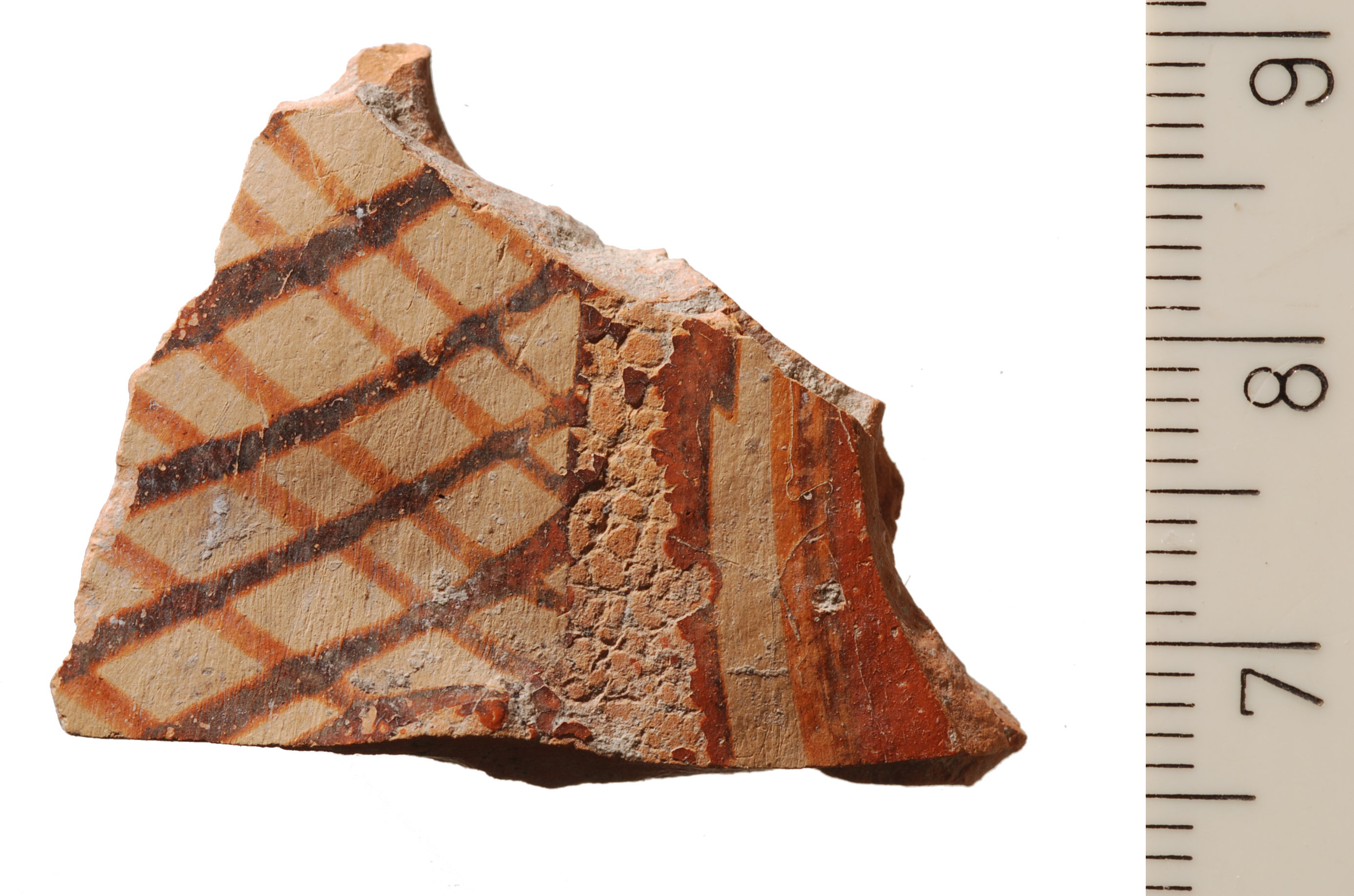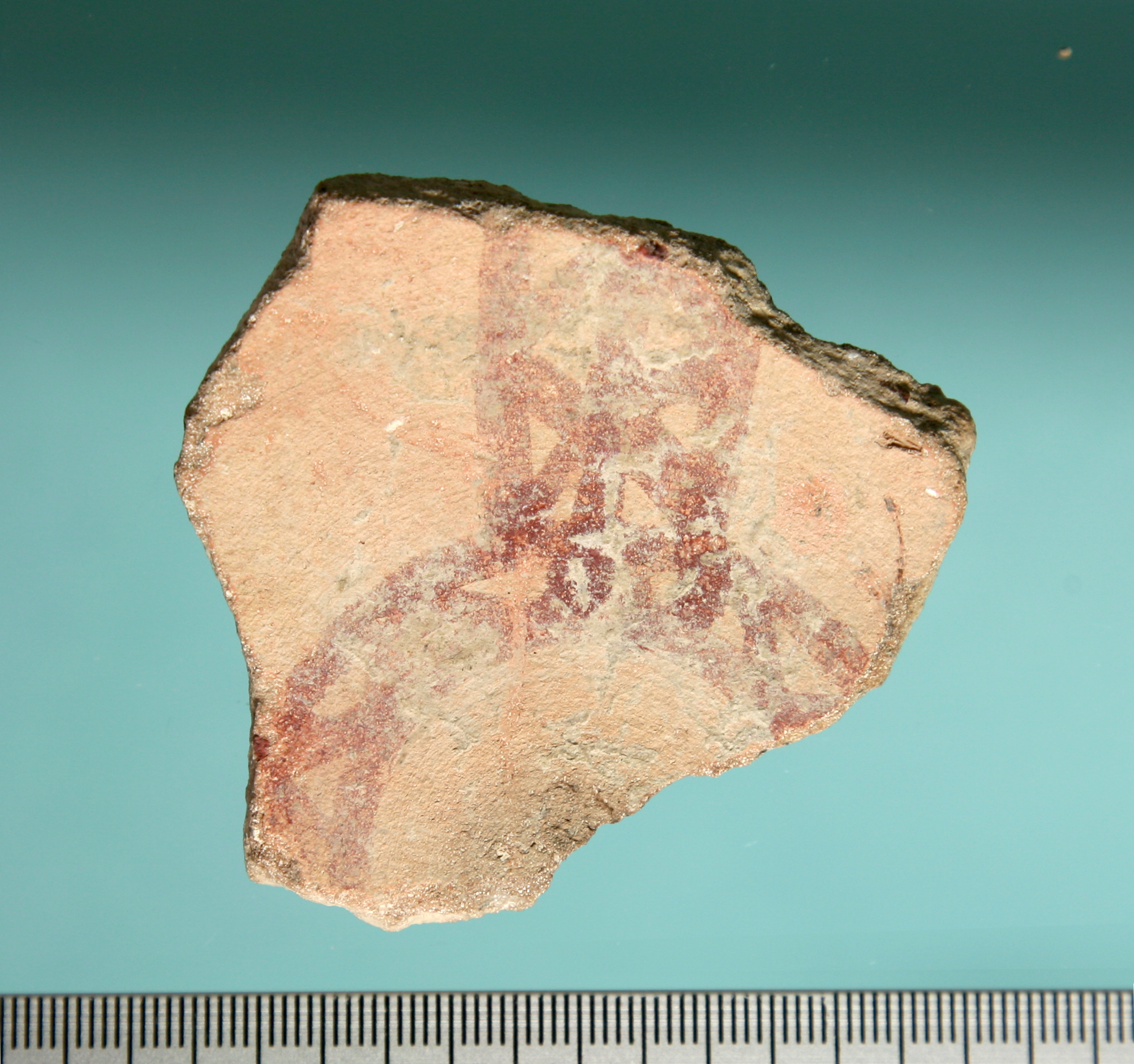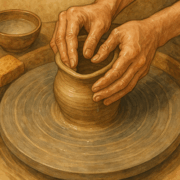Mycenaean Imports Early in Jerusalem’s History
Newsletter
Don’t get our newsletter? No problem! We send out a newsletter about our project every three or four months (no spamming I promise) with updates about our research, special artifacts, conferences, and other events. It is really interesting, and you can subscribe to be on our list HERE. Below is an extended version of our “Finds from the Lab” feature from the July issue of our newsletter.
Imports
It is amazing how sometimes it only takes three or four small pieces of broken pottery to alter our archaeological knowledge and previous assumptions. We have three pieces of imported pottery from the Late Bronze Age (LB) – the 14th century BCE. Two are Mycenaean, from Greece (see below) and one is Cypriot. This tells us that there was at least some trading activity during that time period in Jerusalem.

Late Bronze Age Imported Mycenaean (Greek) Pottery
The Late Bronze Age, associated with pre-Israelite Canaanite culture and settlement, is archaeologically elusive in Jerusalem, and demonstrates that archaeological finds do not always reflect the historical reality. In other words, since there are no destruction layers or dramatic changes from this time period in Jerusalem, the archaeological material from the Late Bronze Age is pretty sparse.
However, lack of evidence is not evidence in and of itself. Despite the lack of physical evidence from the Late Bronze Age, we know from historical documents like the Amarna letters and a cuneiform tablet found in the ‘Ophel Excavation that Jerusalem was indeed a city with a king, a palace, and an advanced society.
Imported pottery in general indicates advanced trade routes and an advanced economy, which was common in cities, among other things.
Very little imported Late Bronze Age pottery was found during previous excavations in ancient Jerusalem and most of what has been researched and published originates from mixed contexts. Significant quantities of such vessels were found only within a couple of tombs outside of the city. The first was on the Mount of Olives (Dominus Flevit), and the second in the Nachalat Aḥim neighborhood (about 4 km North-West of the City of David). The relation of these tombs to the city of Jerusalem remains unclear.
Because there is so little evidence of imported pottery or of a “city” in Jerusalem, every tiny pottery sherd that we find is important. Therefore, our three pieces contribute to the study of Bronze Age Jerusalem and further substantiate the written historical record.

Indicative Late Bronze Age Canaanite bowl
Other Finds
Our project has also discovered a small amount of local Canaanite pottery from the Late Bronze Age. It is often difficult to differentiate between Late Bronze and Early Iron Age (Israelite Settlement period) local ware because some of the Late Bronze traditions continued into the Iron I in style and morphology (especially among cooking pots). Our project has also recovered scarabs, a possible fragment of an Egyptian statue, and an amulet naming Thutmose III, which all constitute evidence for Egyptian influence in the Late Bronze Age.
The contrast between the lack of archaeological material from this period and the written account in the Amarna letters led Tel-Aviv University historian, Professor Nadav Na’aman, to claim that the archaeological evidence does not always aptly reflect the intensity or size of any given site, and that archaeology should be complemented by additional textual sources (Check out the article HERE). This helped refute the theory advocated by Professor Israel Finkelstein and others that the United Monarchy of Kings David and Solomon was insignificant.
As a result, Finkelstein and others promoted a new theory that was meant to respond to Na’aman’s claim, and suggested that Jerusalem’s Late Bronze Age remains have not been discovered because they lie under today’s Temple Mount, which cannot be excavated. They suggested that the Temple Mount is the location of Jerusalem’s ancient Tell, and was the center of the Bronze Age city. This would mean that, as Na’aman said, “the most important area for investigation…remains terra incognita“. Consequently, the Bronze Age artifacts from our sifting project take on even more significance and importance.
The Sifting Project has recovered a massive amount of pottery and other artifacts dating from the Iron age IIA until modern times, truly validating our historical knowledge about the main periods of occupation on the Temple Mount. Yet even with the large amounts of pottery recovered in our project, the Bronze Age artifacts (pre-Iron IIA) take up only 0.5% of the total amount of artifacts found by the project. The percentage is much greater in the City of David area.

Eastern Slope of the Temple Mount
This holds true also when studying pottery from the eastern slopes of the Temple Mount (the western bank of the Kidron valley), where very few pre-Iron IIA pottery sherds were found. This data, along with many other archaeological arguments, validates the historical sources that indicate that the pre-First Temple city was located to the south of the Temple Mount, while the main activity at the Temple Mount began only during the Iron Age IIA (the First Temple period). The pieces of imported pottery and other artifacts from the Late Bronze Age indeed imply that there was an important city in the area which tapped into international trade routes reaching as far as the Mycenaean centers, but the city’s main occupation area was not on the Temple Mount, but rather near it.
Confused? Is lack of, or little evidence, evidence? Or not evidence?
Well, this is an example of the complexity of archaeological interpretation. There is a big difference between evidence such as architectural remains and rich finds that originate from a clear context (and which can be assigned to the end of a period or a transition from one period to the next), and scarce pottery sherds, coins, and other finds originating from a site’s topsoil. Such finds are considered as reliable statistical indicators of the main activities and occupations that took place at the site. Bronze Age pottery sherds are abundant in the topsoil and fills in the vicinity of the City of David, and support the widely-held premise that the pre-First Temple period City of Jerusalem was in the City of David rather than on the Temple Mount.
Discover more from The Temple Mount Sifting Project
Subscribe to get the latest posts sent to your email.












Leave a Reply
Want to join the discussion?Feel free to contribute!